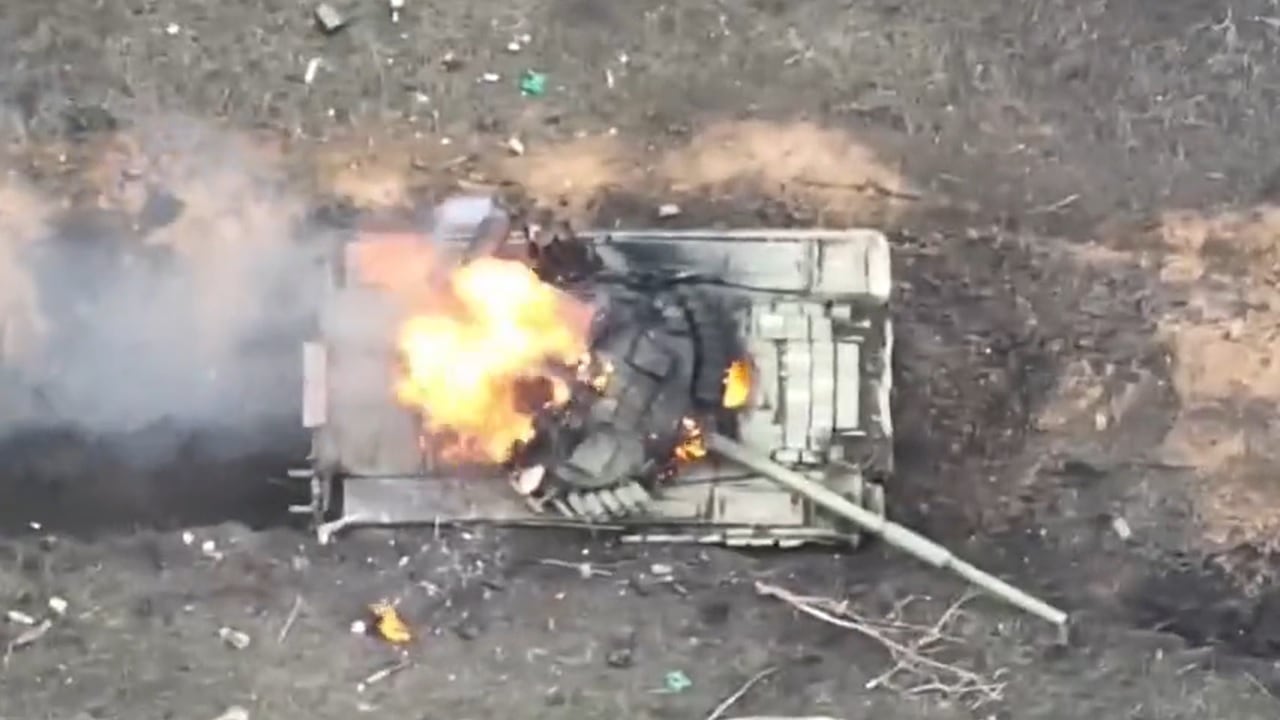The Kamikaze Drone War in Ukraine: The Russian Army has lost a significant number of tanks and other vehicles in drone attacks carried out by the Ukrainian military. Kyiv’s forces have employed unmanned aerial vehicles (UAVs) to drop small ordnance and even gasoline bombs to great success. The Kremlin was initially slow to react, but it is now utilizing small drones as well.
Moscow’s focus in drone warfare has been more focused on loitering munitions – or kamikaze drones – which can seek out targets of opportunity and strike with deadly precision. The low-cost Lancet suicide drone has increasingly been seen as one of the greatest threats to the Ukrainian forces, and Reuters reported this week that soldiers on the frontlines have said the frequency of its use has increased in recent months.
“Earlier, in spring, they were not using Lancets as often as they are now,” 35-year-old artillery gunner Bohdan, who gave his call sign as Doc, told Reuters near Avdiivka on the Donetsk region frontlines.
Kamikaze Drones: Cheap But Deadly
As previously reported, the ZALA Lancet loitering munition, designed by the ZALA Aero Group, a subsidiary of the Kalashnikov Group, is one of the few successful domestically built Russian platforms to see service in Ukraine. It is the successor to the Kub (“Cube”), an earlier, flying-wing-style loitering ordnance system also developed by ZALA. The Lancet, which was first unveiled in June 2019, was field-tested in Syria, where it was employed by anti-government forces in Idlib in 2020-2021.
The Lancet, which costs around $35,000 – compared to the hundreds of thousands of dollars each S-300 missile costs – features two X-shaped wings at the front and rear of the fuselage and is powered by an electric motor that drives a two-bladed propeller located at its rear. The kamikaze drone is constructed of plastic and composite materials and weighs just 12 kilograms, including its 3 kg payload.
It has a maximum range of 40 kilometers, and its endurance is approximately 40 minutes. The ZALA Lancet can serve in both a reconnaissance and attack role, and during flight, it can be directed by GPS coordinates or visual control. During the terminal part of a mission, it can be controlled manually to target via electro-optical guidance and a TV guidance unit.
More Drones to Come
The Lancet may not be the only threat that Ukraine’s forces could face in the coming months. Russian state media outlet Tass reported on Wednesday that the Kremlin’s unmanned aviation design bureau has developed a portable, tube-launched aircraft-type kamikaze drone called the Vector-120.
“Engineering efforts and pilot production of individual units of the Vector-120 loitering munition are underway now,” the design bureau said. “We plan to enter the flight test phase as early as 2024. The device will be launched from a disposable launch tube in the serviceman’s gear.”
It was compared to the U.S.-made Switchblade tactical loitering munition that Ukraine has employed in the ongoing conflict. The new Russian loitering munition will be able to carry a payload in the form of a 220-250 gram warhead.
“This is quite enough to surpass the destructive effect of RGD-5 or F-1 grenades or compete with the RPG-7 grenade launcher round,” the design bureau further noted. “The item can be launched without visible smoke, fly to a certain distance from the launcher, unfold its wings and carry out the flight mission.”
In the ongoing war in Ukraine, each side has sought ways to counter the loitering munitions, and that has included wire mesh screens over artillery positions, while Kyiv’s forces have even employed shotguns to literally make it open season on the aerial threats.
Author Experience and Expertise: A Senior Editor for 19FortyFive, Peter Suciu is a Michigan-based writer. He has contributed to more than four dozen magazines, newspapers, and websites with over 3,200 published pieces over a twenty-year career in journalism. He regularly writes about military hardware, firearms history, cybersecurity, politics, and international affairs. Peter is also a Contributing Writer for Forbes and Clearance Jobs. You can follow him on Twitter: @PeterSuciu.
From 19FortyFive
A Russian Submarine Accidently ‘Destroyed Itself’
Total Massacre’: Ukraine Footage Shows Russian Cruise Missile Shipment Attacked

